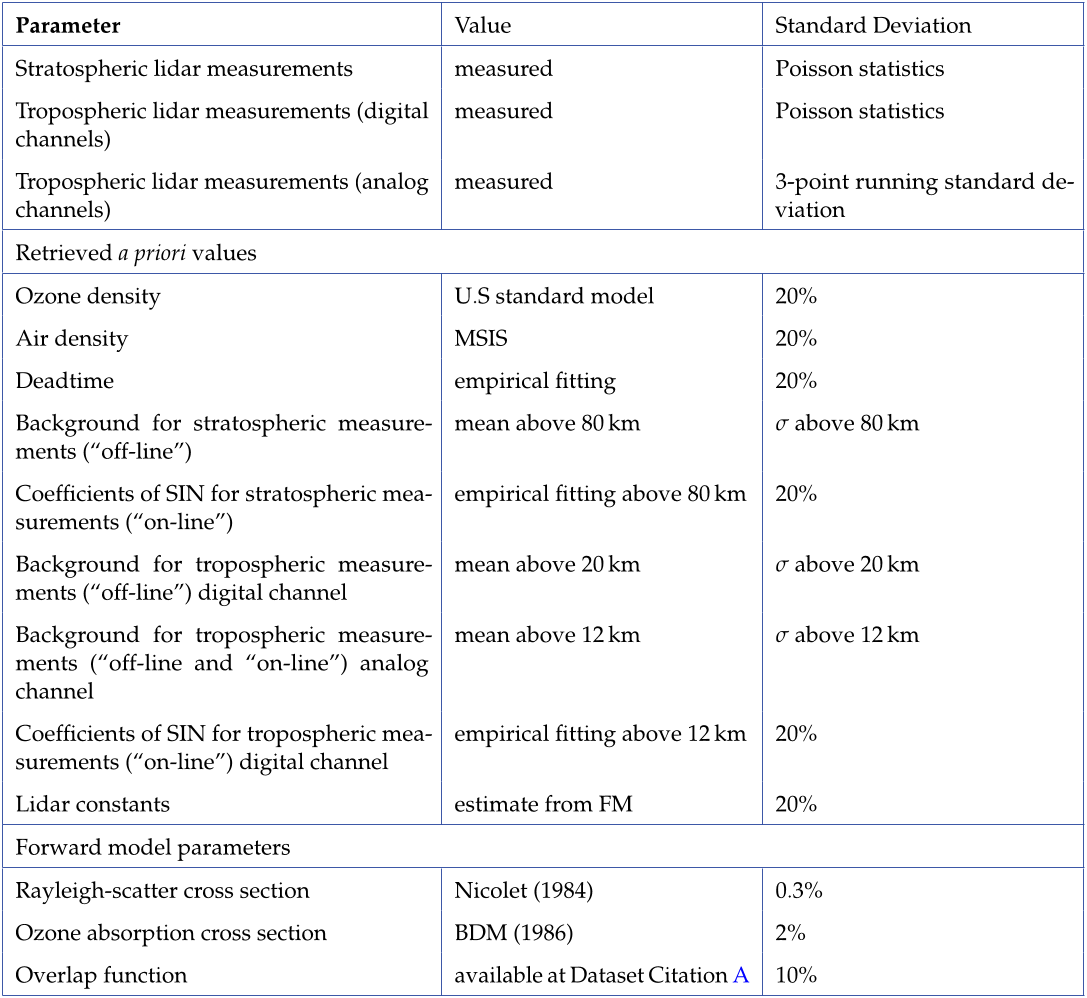




read more











The authors are planning to augment their forward model to allow for inclusion of aerosols, as well as other trace gases.
Other atmospheric and systematic parameters such as air density, the dead time of the system, and the background counts can be retrieved along with ozone profiles.
This laser has an output energy of about 200 mJ for the “on-line” channel, while the “off-line” wavelength at 355 nm is generated by the third harmonic of a continuum Nd:YAG laser with an energy of 50 mJ at 50 Hz.
for stratospheric ozone measurements, choosing a laser that can reach higher altitudes in the stratosphere is the main concern [11, 20, 21].
To generate a full length a priori covariance matrix for both air and ozone density profiles at altitudes below 12 km, a tent function with a correlation length of 300 m was used.
For stratospheric measurements, the ozone uncertainty has its maximum of 4% at the bottom of retrievals, which is higher than the calculated uncertainty of 2% in [36] uncertainty budget.
In order to determine the background counts in both the tropospheric and stratospheric measurements, the mean of the counts above a specific height is calculated and used as the a priori for the “off-line” channels, since SIN is negligible in these channels.
as the laser power in the “online” channel is about 2 times stronger than the laser power in the “off-line” channel, the effect of SIN in the “on-line” channel is more pronounced.
A perfect retrieval, in the sense all the information comes from the measurement with no effect from the a priori state, has averaging kernels equal to one, where the first term of the above equation becomes zero.
The authors used four different channels for tropospheric ozone retrievals, and eight different channels for the stratospheric-tropospheric ozone retrievals.
The transmitter for the tropospheric system uses the fourth harmonic of a Continuum Nd:YAG laser (266 nm) frequency shifted by Raman Stimulated Scattering in a D2 high pressure cell [34].
in most cases, for both stratospheric and tropospheric ozone studies the effect of these gases in final ozone retrievals is negligible.
The trade-off is that the uncertainty of the retrieval in the traditional method is smaller, so that at 11 km it is 4.5% as opposed to the OEM retrieval which has a larger uncertainty of 7.5%.
This choice of correlation length is because above 12 km, the stratospheric lidar measurements have the most weight and the retrieval grid for these measurements starts at 300 m.